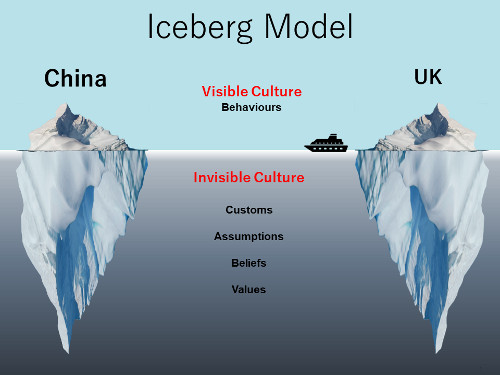1 What is culture?
What do you think of when the term ‘culture’ is mentioned? It is likely that the first images that come to mind are related to everyday situations and behaviours. However, the Iceberg metaphor shown in Figure 1 illustrates that there are many assumptions, values, beliefs and customs that are deeply rooted and condition our behaviours, but which, crucially, are not necessarily visible at first sight.
In their book Hidden Differences, Hall and Hall (1987, p. xvii) said: ‘Despite popular beliefs to the contrary, the single greatest barrier to business success is the one erected by culture’.
But ‘culture’ is a term with many different meanings and which may be understood in many different ways. In Activity 1, you will be presented with two definitions that will provide a foundation for learning more about intercultural competence and appreciating how much values, attitudes and behaviours both shape and are shaped by culture.
Activity 1
Read the following definitions of ‘culture’ quoted in Spencer-Oatey’s (2012) book entitled What is Culture?.
Definition 1
Culture consists of patterns, explicit and implicit, of and for behaviour acquired and transmitted by symbols, constituting the distinctive achievements of human groups.
Definition 2
Culture is a fuzzy set of basic assumptions and values, orientations to life, beliefs, policies, procedures and behavioural conventions that are shared by a group of people, and that influence (but do not determine) each member's behaviour and [their] interpretations of the 'meaning' of other people's behaviour.
Now decide whether the following statements correspond to ideas expressed in Definition 1, Definition 2, or both.
a.
Definition 1
b.
Definition 2
c.
Both Definition 1 and Definition 2
The correct answer is a.
a.
Definition 1
b.
Definition 2
c.
Both Definition 1 and Definition 2
The correct answer is a.
a.
Definition 1
b.
Definition 2
c.
Both Definition 1 and Definition 2
The correct answer is b.

